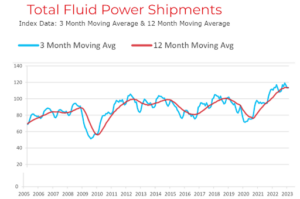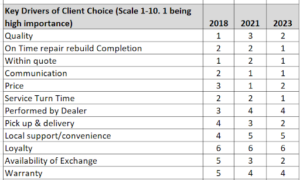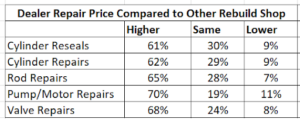The Bucket Game: Navigating the Pitfalls in Service Management
Guest writer Jim Dettore walks us through the ways in which we use different metaphorical buckets to juggle our financial reporting in, “The Bucket Game: Navigating the Pitfalls in Service Management.”
In the complex world of service management, the “Bucket Game” has become an all-too-familiar practice. This game, often played by service managers, involves the shuffling of hours from one job to another across different accounts on the profit and loss (P&L) statement. While it might seem like a harmless balancing act, the implications run deeper, often masking underlying issues and hindering the pursuit of a truly high-performing service operation.
Understanding the Bucket Game
At its core, the Bucket Game is about reallocating hours from one job to another within the P&L statement. For instance, if a particular job takes longer than expected, a manager might move hours from a more profitable job to cover the overrun. This practice creates an illusion of efficiency and profitability, but in reality, it does not affect the bottom line. The total hours and costs remain the same; they’re just distributed differently.
The Illusion of Profitability
The primary allure of the Bucket Game is the appearance it creates. By shifting hours around, a service manager can make a particular job look more profitable than it actually is. This can be particularly tempting in environments where performance is measured strictly by the profitability of individual jobs.
Masking the Real Issues
The significant downside of this practice is that it conceals the actual problems that occur during the job. Issues like inefficiency, lack of skill, or process defects remain hidden under the guise of redistributed hours. This lack of transparency prevents the organization from identifying and addressing the root causes of inefficiencies.
The Impact on the Bottom Line
Although the Bucket Game can temporarily improve the appearance of individual job profitability, it does not change the overall financial outcome. The total hours worked, and the costs incurred remain the same. The real danger lies in the false sense of security it provides, potentially leading to poor decision-making based on inaccurate data.
Best Practices to Avoid the Bucket Game
To foster a high-performing service operation, transparency and honesty in reporting are crucial. Here are some best practices:
- Emphasize Accurate Reporting: Encourage a culture where accurate time reporting is valued over the perceived profitability of individual jobs. This honesty allows for a clearer understanding of where improvements are needed.
- Focus on Process Improvement: Instead of masking inefficiencies, identify and address them head-on. Continuous process improvement should be a priority, with a focus on training, better planning, and resource allocation.
- Implement Robust Tracking Systems: Use technology to track time and expenses accurately. This can help in identifying trends and problem areas more efficiently.
- Encourage Open Communication: Create an environment where employees feel comfortable discussing challenges and inefficiencies without fear of retribution. This openness can lead to more effective problem-solving.
- Align Incentives with Overall Performance: Instead of incentivizing managers based on the profitability of individual jobs, align their incentives with the overall performance of the service department or the company. This approach encourages a more holistic view of success.
- Regular Audits and Reviews: Conduct regular audits and reviews of job performance. This helps in keeping track of the actual vs. reported performance and deters the practice of hour shifting.
- Customer Feedback Integration: Include customer feedback in the performance evaluation. Sometimes, customer satisfaction can be a more accurate indicator of job performance than internal financial metrics.
- Leadership by Example: Leadership should set the tone by prioritizing ethical practices and transparency. This top-down approach can significantly influence the organizational culture.
Conclusion
While the Bucket Game might offer short-term benefits in the appearance of individual job profitability, it ultimately hinders the growth and efficiency of a service operation. By embracing transparency, focusing on genuine process improvement, and aligning incentives with overall performance, organizations can avoid the pitfalls of this deceptive practice and stride towards a truly high-performing operation. Remember, the goal is not just to look successful, but to be successful.












